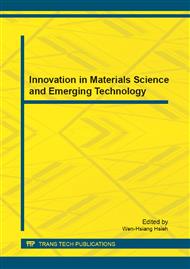p.104
p.109
p.114
p.119
p.124
p.129
p.134
p.138
p.143
Developing a TRIZ-Based Systematic Method to Inspire Individual Student’s Interest and to Solve Problem for Engineering Innovation Education
Abstract:
TRIZ has been developed over six decades and attracted a great deal of interest in industry and education. It can provide a systematic approach to analyze problems where innovation is needed and to provide strategies and methods to solve the problem. It consists of many tools such as 40 inventive principles and the matrix of contradictions, laws of technical system evolution, substance-field analysis, ARIZ (algorithm of inventive problems solving). In this paper, we focused on engineering innovative education and developed a TRIZ-based systematic method applied to inspire individual student’s interest and learning motivation based on their life experience and capability. The process of this method includes analysis of individual student’s interest and expertise, requirement analysis, confirmation of problem direction, problem definition, selection of TRIZ tools, generation of solutions, evaluation of solutions. A case study including an integrated application with mechanical, electrical and information techniques was illustrated for the method and process. The authors expects this research could provide a reference for engineering innovation education and the method proposed in this paper is general in form to be applied for the other disciplines.
Info:
Periodical:
Pages:
124-128
Citation:
Online since:
December 2011
Authors:
Price:
Сopyright:
© 2012 Trans Tech Publications Ltd. All Rights Reserved
Share:
Citation:


